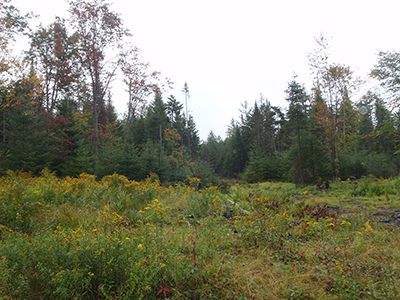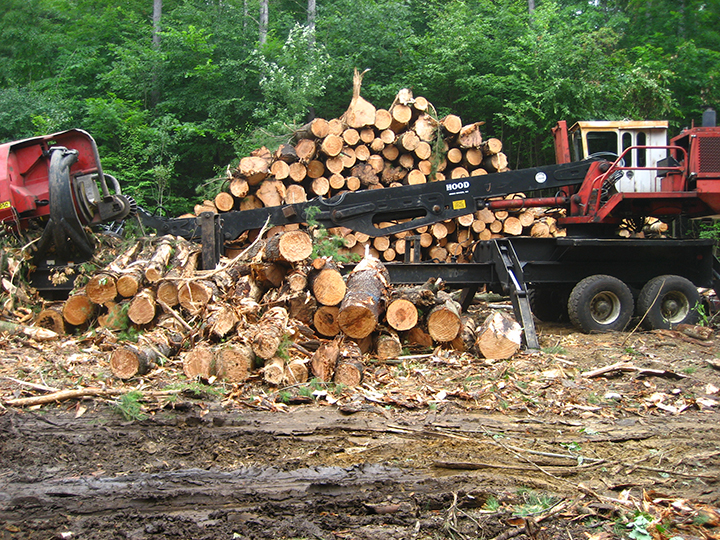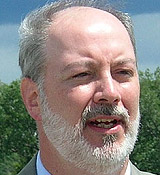
Forestry in the Adirondacks - Why it's Important
Tuesday, February 3, 2015
By: John F. Sheehan

Sustainable forestry site
in the Adirondack Park
The first Monday in February was slated to be Forestry Awareness Day at the State Capitol. It was postponed due to a major snowstorm. The Adirondack Council will participate because commercial forestry is part of the basic fabric of the Adirondack Park.
This year’s Forestry Awareness objectives included a discussion of the state’s initiative to modernize forestry standards for the Adirondack Park, a new effort to improve property tax incentives for timberlands, and a chance to introduce the Park’s new largest landowners, Molpus Woodlands of Mississippi.
The day’s programs are coordinated by the Empire State Forest Products Association, which invites its members and other interested parties to attend. The Council believes well-managed commercial timberlands are essential to the water quality, wildlife, wild beauty, and communities of the Adirondack Park.
What happens to the Adirondack Park’s commercial forests affects the entire Park. They are not isolated, but mixed in with the Park’s “Forever Wild” public lands and its 130 communities. What happens here matters globally too. This isn’t just the largest park in the contiguous United States. It is also the largest intact, temperate deciduous forest ecosystem in the world.
Big temperate, deciduous forests were once very common around the globe. They are characterized by a mix of oak, maple, beech, and elm. These are the forests that provided the food, fuel and raw materials from which the major cities of the world were created.
Consequently, there are few places left where the original, temperate, deciduous forest has remained undeveloped. Here in the Adirondacks, the combination of environmental protection and careful private stewardship has preserved a forested landscape that includes both pristine public lands and productive timberlands.
Since it was adopted in 1894, the Forever Wild clause of the NYS Constitution has protected the state land in the Adirondack Park, the Forest Preserve (about 2.6 million acres) from logging and development.
In addition, there is another roughly two-million acres of undeveloped forest in the Adirondack Park, which belongs to private landowners and is devoted to commercial forestry and recreation. Together, they make up the majority of the wild, open spaces of the Adirondack Park. Together, they filter drinking water, clean the air and provide homes for wildlife not found in other parts of New York.
The Adirondack Council is interested in promoting commercial forestry that protects open, undeveloped spaces and protects water quality and wildlife, while it manages harvests for long-term, sustainable yields, increased employment and business opportunities.
Adirondack commercial forestry is overseen by the Adirondack Park Agency (APA). Like other aspects of the APA’s 44-year-old rules for private land management, current timber harvesting standards have not kept pace with new science or with changes in markets and land ownership. Both timberland owners and environmental organizations have cited the need to update the regulations.
|
In early 2013, the APA responded to requests for changes to its permitting system by proposing a generalpermit for clear-cutting. The Council objected. The APA later withdrew the proposal in favor of creating an advisory group to recommend changes to its standards for commercial forestry practices. The Adirondack Council is participating in these discussions.
Over the past 30 years, the Park has witnessed a transition in timberland ownership. Major industrial corporations that operated paper and lumber mills once owned most of the Park’s private land. But over time, they moved those mills elsewhere and sold their lands to the top bidder. Thanks to the Environmental Protection Fund, the most sensitive of those lands have been purchased for the Forest Preserve. At the same time, the state protected more than 800,000 additional acres from development, yet left in timber production through conservation easements. Conservation easements are agreements with private landowners who permanently retire the development rights on their lands. The state also provides tax reductions for larger managed forest properties that meet certain criteria. Taxes are a major concern for timberland owners. Landowners typically wait 30 years or more between commercial timber harvests for mature trees. The tax bills arrive every year. It’s important to keep land taxes manageable for owners of the largest unbroken forests in the Park, in order to decrease the financial pressure to subdivide and develop their lands. However, the current tax abatement program places too much of the financial burden on local communities and its oversight issues have prevented an objective measurement of the program’s effectiveness. (See our report: Shifting the Burden) We hope to use our report and other research to help the state reshape this program and increase its effectiveness, while removing the onus from local property taxpayers to foot the bill. Finally, there was a change at the top in timberland ownership in the Adirondack Park this year, as Lyme Timber of Lyme, NH, sold some of its holdings, while Molpus Woodlands bought 112,000 from the Forestland Group. The purchase made Molpus, of Philadelphia, Miss., the Adirondack Park’s largest private landowner at more than 273,000 acres. Molpus had owned only 30,000 acres (near Saranac Lake) until its January 2014 purchase of nearly 131,000 acres in St. Lawrence, Clinton, Franklin, and Lewis counties from Rayonier. The Council congratulated Molpus for making a long-term investment in the Adirondack Park’s economy, and for helping to stabilize woodlands employment by keeping these lands in production. We also urged the company to continue to manage these lands under a third-party certified sustainable management plan, such as the Sustainable Forestry Initiative. We asked state officials to assist the company in achieving this. New York taxpayers own a conservation easement on all of Molpus’s recently purchased lands and have a stake in keeping them healthy. For more on Forestry Awareness Day: www.esfpa.org Would you like to comment on what you've read or viewed? We'd love to hear from you. Please click to send us a message.
Born and raised in Troy, NY, John Sheehan is a graduate of Catholic Central High School and the State University at Albany (1985; BA). Before joining the Council's staff in 1990, John was the managing editor of the Malone Evening Telegram, just north of the Adirondack Park. Prior to that, he worked as journalist for the Troy Record, (Schenectady) Daily Gazette, Watertown Daily Times and Newsday. John is a regular guest lecturer at several New York colleges and universities, including Colgate University, Hobart & William Smith College, Hamilton College, Rensselaer Polytechnic Institute, Union College, Siena College, SUNY Albany, SUNY Binghamton, SUNY College of Environmental Science and Forestry (Syracuse), and SUNY Potsdam. He has also addressed dozens of local organizations including local Rotary and Kiwanis clubs and chambers of commerce, scientific societies and community forums. John and his wife Deborah live in Albany and are seasonal residents of the Adirondack Park. Their daughter Hannah attends Albany public schools. |
||






